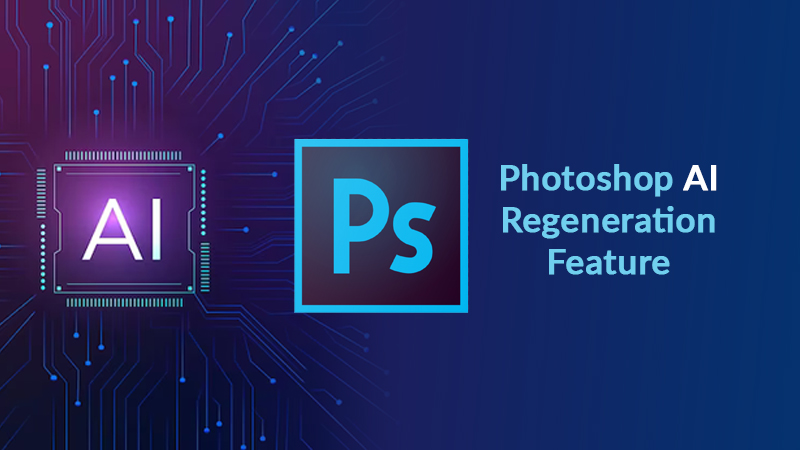The photo retouching service industry has undergone a seismic shift with the introduction of Adobe’s groundbreaking AI regeneration feature in the Photoshop beta. This new capability allows photographers and retouchers to instantly fix imperfections and even reconstruct missing parts of images with just one click. For an industry built on tedious manual work, this represents a huge leap forward.
In the past, retouching photos was an arduous, time-consuming process that required advanced skills with Photoshop’s healing and cloning tools. Retouchers had to carefully patch over blemishes, smooth wrinkles, brighten eyes, and sculpt bodies to meet commercial photography standards. This could take hours or even days per photo. Even for experienced professionals, it was often more art than science.
AI regeneration changes all that by automating many tedious retouching tasks. Thanks to Adobe’s Sensei AI platform that underpins the feature, Photoshop can now detect and remove imperfections instantly. It can also plausibly fill in missing image areas by using neural networks to generate realistic image synthesis. This includes rebuilding entire body parts like hands, legs, and heads.
For instance, a wedding photographer can now easily remove unsightly skin blemishes, stray hairs, or even visible bra straps without meticulous cloning. An ecommerce brand can fill in missing product shots by synthesizing realistic images from samples. Even large chunks of missing photos, like removing unwanted background objects, can be plausibly filled in.
Photoshop handles all this automatically once the user selects using clipping paths or lasso tools over the area to regenerate. The results are only sometimes perfect, but they require far less manual intervention compared to traditional healing tools. And Adobe promises the results will improve over time as the AI model trains on more data.
The Speed and Efficiency Gains when it comes to Photo Retouching Services are Staggering.
The efficiency gains from AI regeneration can be staggering for high-volume photographers and retouching teams. Tasks that once took hours or days now take seconds or minutes. This allows retouchers to accomplish much more work each day, increasing throughput and profits. It also saves clients’ money by reducing per-image processing costs.
Some commercial services have already reported 5x or even 10x gains in retouching speed thanks to regeneration. For instance, ecommerce brands with thousands of product images can now realistically retouch entire catalogs overnight versus outsourcing months of manual work. AI regeneration also opens the door to offering retouching on-demand rather than waiting days or weeks.
The savings may allow individual photographers to finally afford pro-level retouching without breaking their creative budgets. Regeneration is a huge time and money saver.
New Creative Possibilities with AI Image Synthesis
But automation isn’t the only benefit. Regeneration also introduces cool new creative possibilities by giving Photoshop powerful AI-based image synthesis capabilities.
Now, users can easily generate entire new image areas, reflections, patterns, and textures within their photos rather than just erasing imperfections. Think realistically extending a skyline background, adding reflections in glass objects, or even generating seamless textures to create interesting graphic effects.
These unique creative applications go well beyond standard retouching into broadening what’s achievable in Photoshop without advanced artistic skill. Much like recent explosion in AI art generation, tools like regeneration make high-level visual effects and image manipulations accessible to everyday users.
Retouchers Can Focus More on the Human Aspects
With all the new efficiencies, expert retouchers also have more creative bandwidth to focus on nuanced aesthetic judgements – the aspects AI still doesn’t handle well. Tasks like ensuring color accuracy, realistic lighting, emotive facial tones, and overall harmony still benefit enormously from a seasoned human eye.
By automating the tedious parts, regeneration allows retouching pros to focus more on big picture creative direction versus just manual labor. This emphasizes retouchers as visual craftspeople versus rote production workers. It may be the difference between simply delivering technically sound images versus creating something aesthetically breathtaking.
Potential Industry Growing Pains
However, such a massive technology shift is bound to cause growing pains. Many retouchers still take great pride in manual craft skills that regenerate now automates. Some may feel their expertise is undervalued as AI takes over rote tasks. Others may worry about over-automation and eventual job loss, like debates around AI art generator DALL-E 2.
Given Photoshop’s newfound synthesis powers, there are also concerns about image authenticity and ethics. Generating fake image content has a history of abuse so that Adobe will need safeguards against misinformation, political malfeasance, or other manipulation. Features like one-click facial restoration could fuel body image issues if used irresponsibly.
Finally, small retouching teams may face pricing pressure to pass automation savings to clients. Lower prices and volume discounts could make high-touch bespoke work harder to sustain financially. Striking the right balance between human craft and AI efficiency will be key.
Overall, AI regeneration seems poised to take photo retouching service into an exciting new era-one that emphasizes more creativity over drudgery and bigger thinking instead of just mechanics. Like most automation revolutions, there may be some painful adjustments at first. But in the end, such a wave of innovation lifts the whole industry in exciting new ways even seasoned pros couldn’t imagine before.

